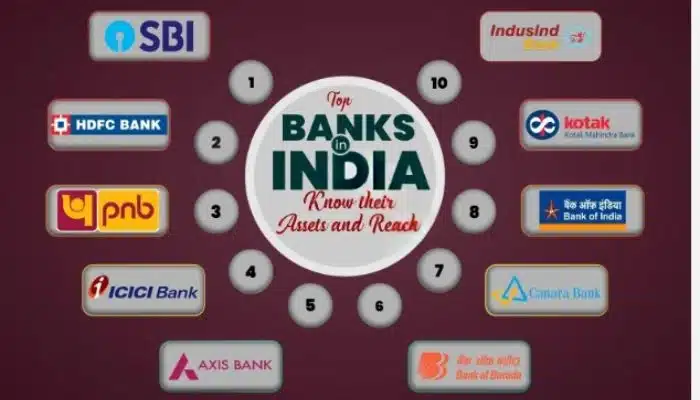Indian banks, which have enjoyed robust profitability over the past two years, are expected to see a modest dip in performance this fiscal, according to a report by Crisil Ratings. The report projects a decline in the Return on Assets (RoA) by 10 to 20 basis points (bps), bringing it down to the range of 1.1% to 1.2% — from a two-decade high of approximately 1.3% recorded in fiscals 2024 and 2025.
This shift signals that even in a falling interest rate environment, profitability challenges are beginning to surface for Indian lenders. The moderation in net interest margins (NIMs), rising credit costs, and static non-interest income are key reasons behind the expected decline. Here’s a closer look at the factors at play and what they mean for the banking sector in FY26.
What is Return on Assets (RoA) and Why It Matters?
RoA is a crucial profitability metric used to evaluate how efficiently a bank can generate earnings from its assets. A higher RoA indicates stronger earnings performance and efficient asset utilization. For the past two financial years, Indian banks maintained a healthy RoA of about 1.3%, buoyed by high credit growth, stable asset quality, and strong interest spreads.

However, with evolving macroeconomic conditions, the sector is now preparing for a slight dip in this figure
Key Reason 1: Contraction in Net Interest Margins (NIMs)
Crisil Ratings attributes the RoA decline primarily to a squeeze in net interest margins. NIM, which measures the difference between the interest income generated by banks and the amount they pay out as interest on deposits, is a critical driver of bank profitability.
As interest rates begin to fall, the yields on loan assets are expected to decline faster than the rates on deposit liabilities. This uneven adjustment creates pressure on banks’ NIMs.
In simpler terms, while the Reserve Bank of India (RBI) may reduce repo rates to stimulate economic activity, banks cannot cut deposit rates as quickly due to competition for savings and regulatory requirements. As a result, the gap between what banks earn and what they pay out narrows — directly impacting profitability.
Read More: Pakistan Cancels All Flights to PoK Amid Soaring Tensions With India After Pahalgam Attack
Key Reason 2: Credit Costs May Rise from Current Lows
Over the past few years, banks have benefited from a secular decline in credit costs — the expenses associated with provisioning for bad loans. This trend has helped bolster profitability even during periods of economic uncertainty.
However, Crisil now believes that credit costs have bottomed out. With no further room for substantial improvement, and potential macroeconomic stress on the horizon, banks could see credit costs inching up.
Although asset quality remains broadly stable, any rise in loan defaults or stress in sectors like MSMEs or unsecured retail could push provisioning requirements higher.
Key Reason 3: Other Income and Operating Expenses Flat
According to Crisil, other income streams — such as fees, commissions, and trading gains — are expected to remain flat this fiscal. Operating expenses, including employee costs and digital investments, are also likely to hold steady or increase marginally.
In the absence of growth in these areas, banks have little buffer to offset the impact of shrinking NIMs and rising credit costs. Therefore, any dip in core interest income has a more pronounced effect on the bottom line.
The Bigger Picture: Still Above Long-Term Averages
Despite this forecasted moderation, the sector’s profitability remains robust when viewed in a longer-term context. Crisil notes that the projected RoA of 1.1%–1.2% is still well above the 20-year average of approximately 0.8%, and significantly higher than the decade-average of about 0.6%.
This indicates that while banks may face some short-term pressure, their overall health and earnings potential remain strong — aided by improved balance sheets, capital buffers, and digitization efforts.
What Lies Ahead for Indian Banks?
The banking sector may be entering a more normalized phase of profitability, moving away from the post-COVID rebound highs. Going forward, banks will likely focus on optimizing their deposit strategies, improving operational efficiency, and diversifying income sources to maintain returns.
Banks that adapt quickly — especially in leveraging technology, containing costs, and maintaining asset quality — are likely to perform better in this environment.
Conclusion
The expected dip in RoA by 10–20 bps this fiscal, despite supportive monetary policy, highlights the delicate balance banks must maintain between asset yields and funding costs. While profitability may moderate, it remains comfortably above long-term averages — suggesting resilience within the sector.
As India’s economy evolves, the banking sector will need to remain agile and proactive to sustain growth and earnings in a changing interest rate landscape.










